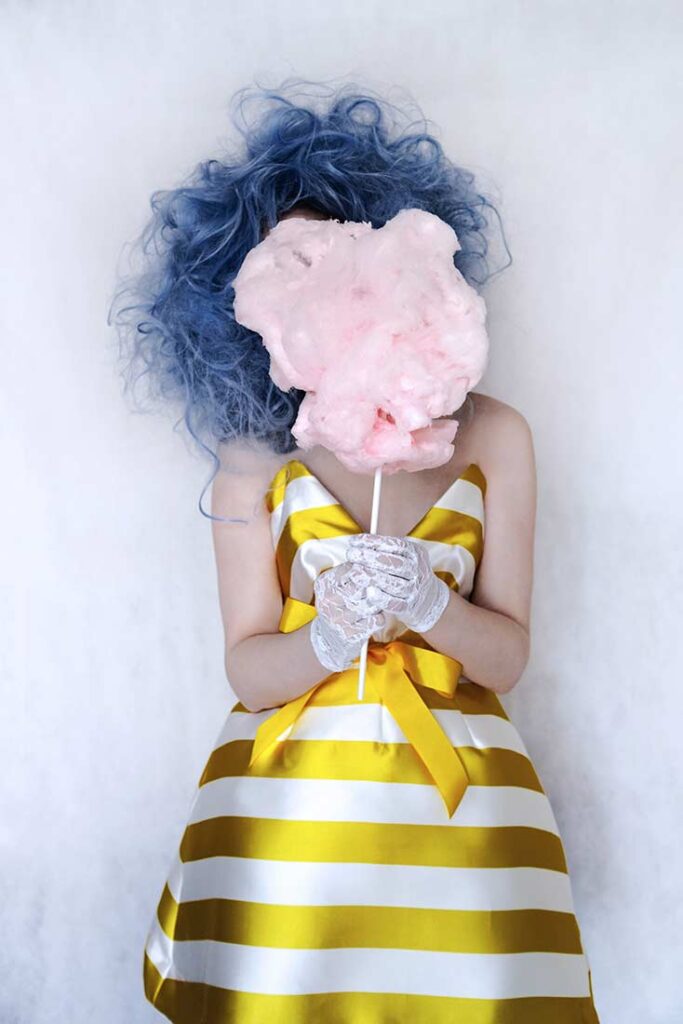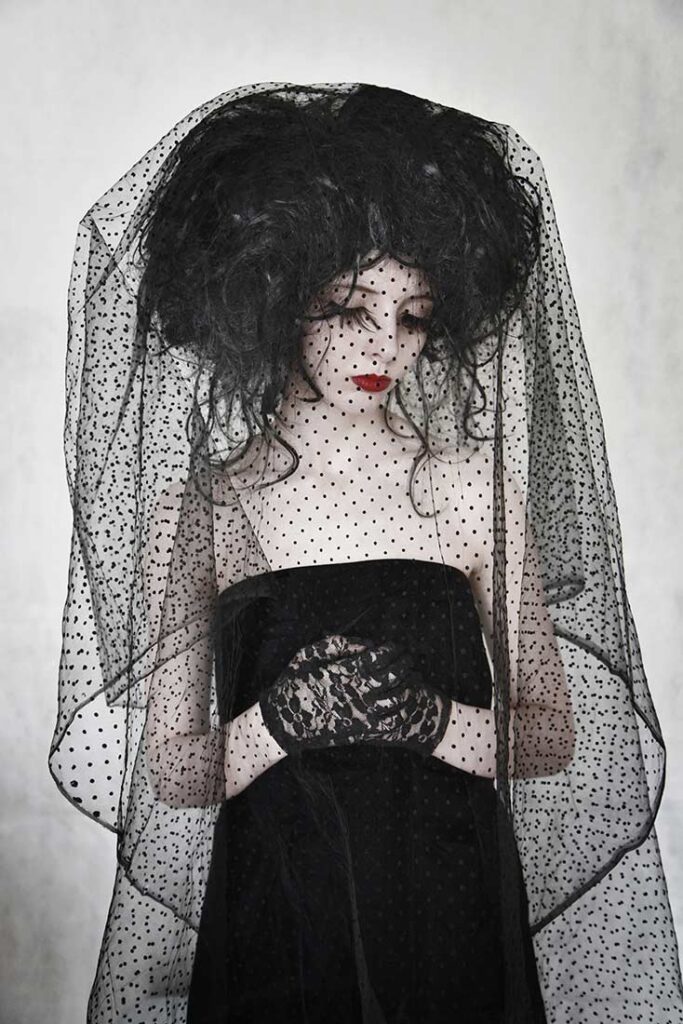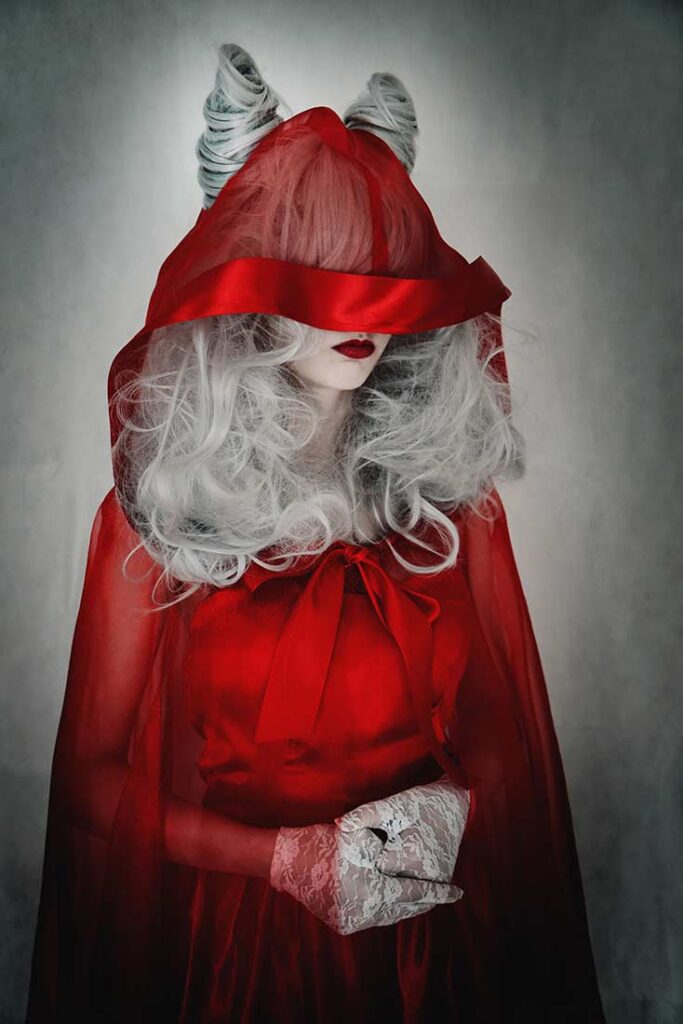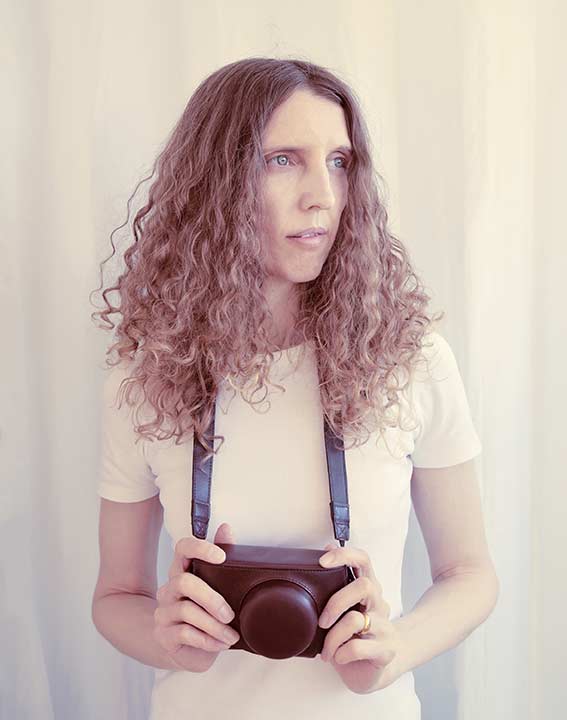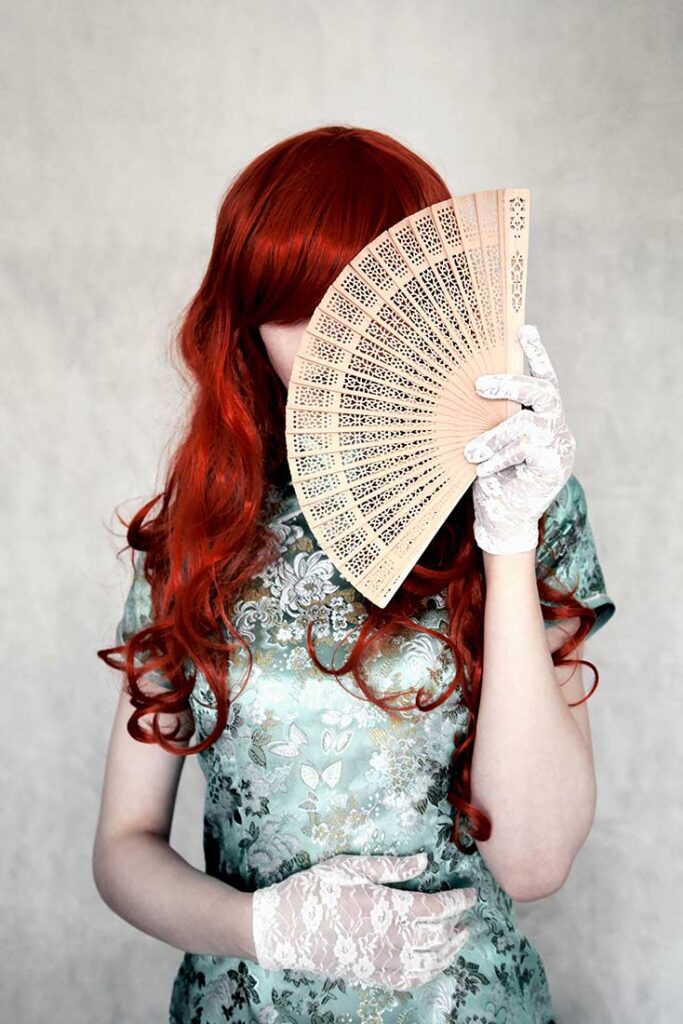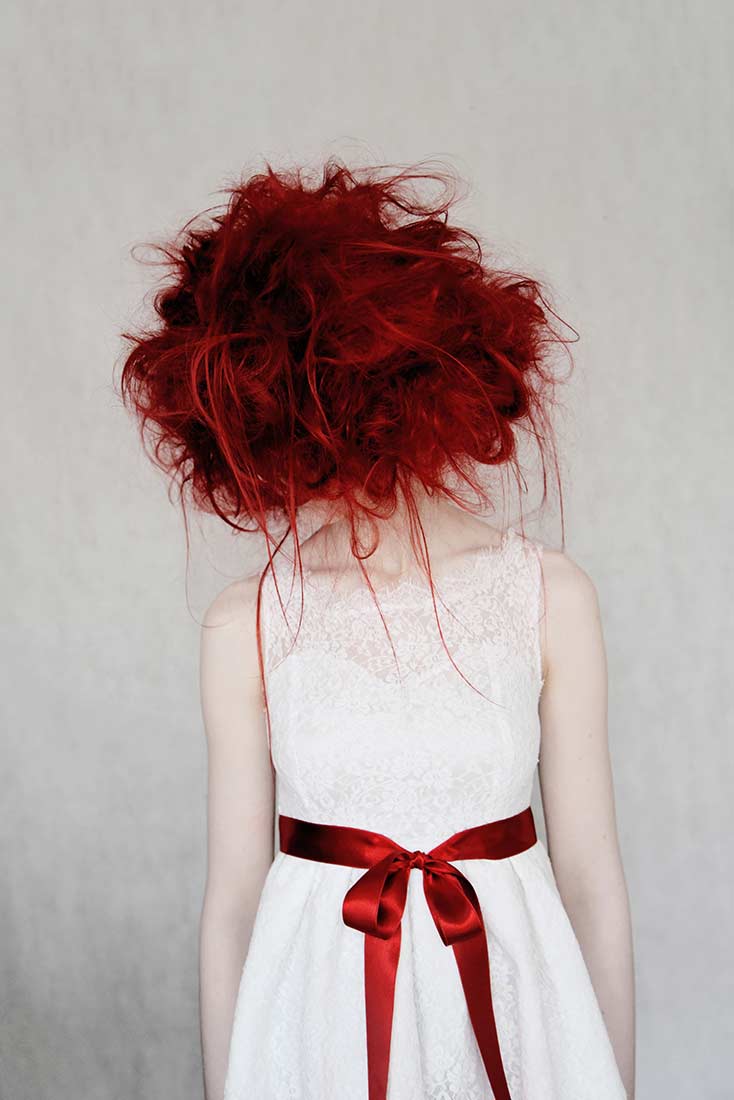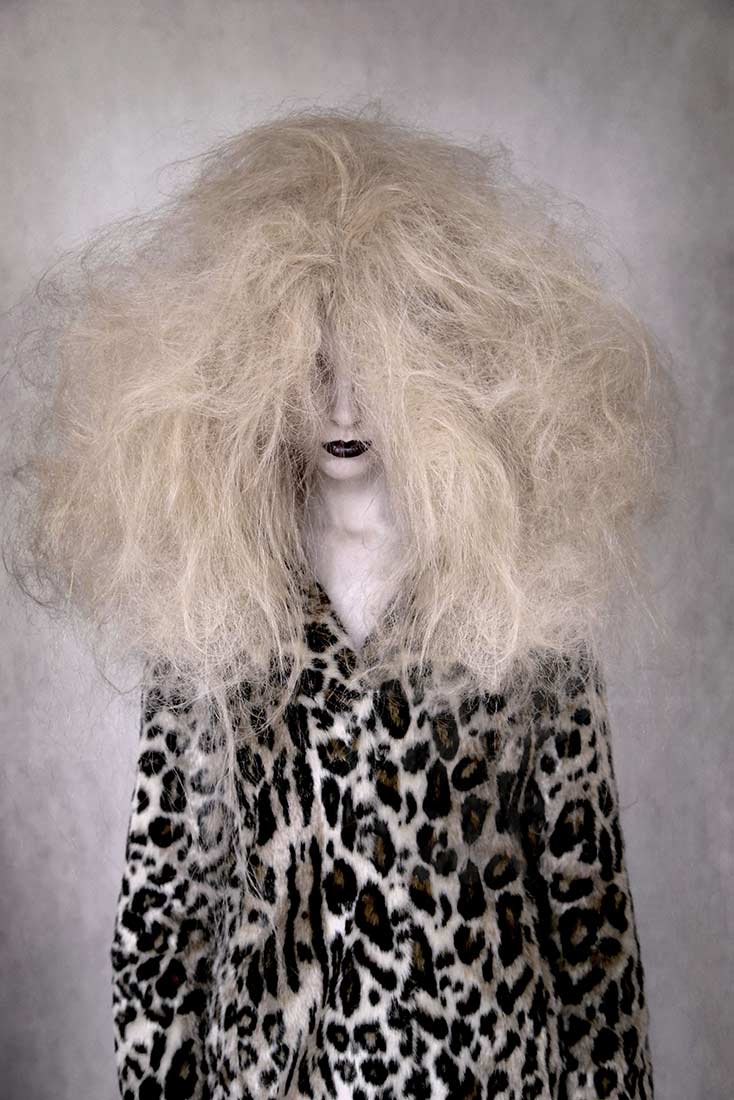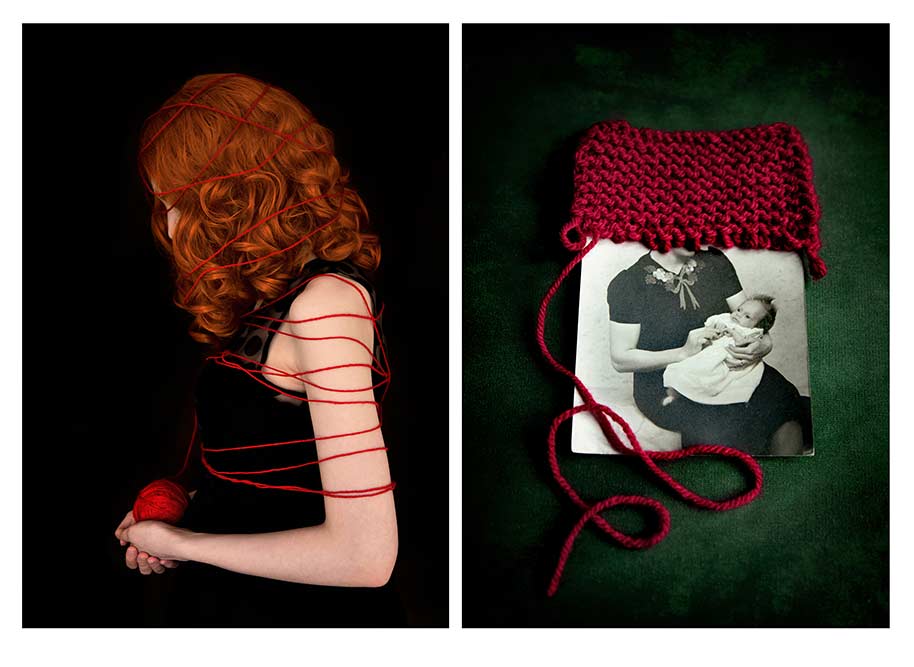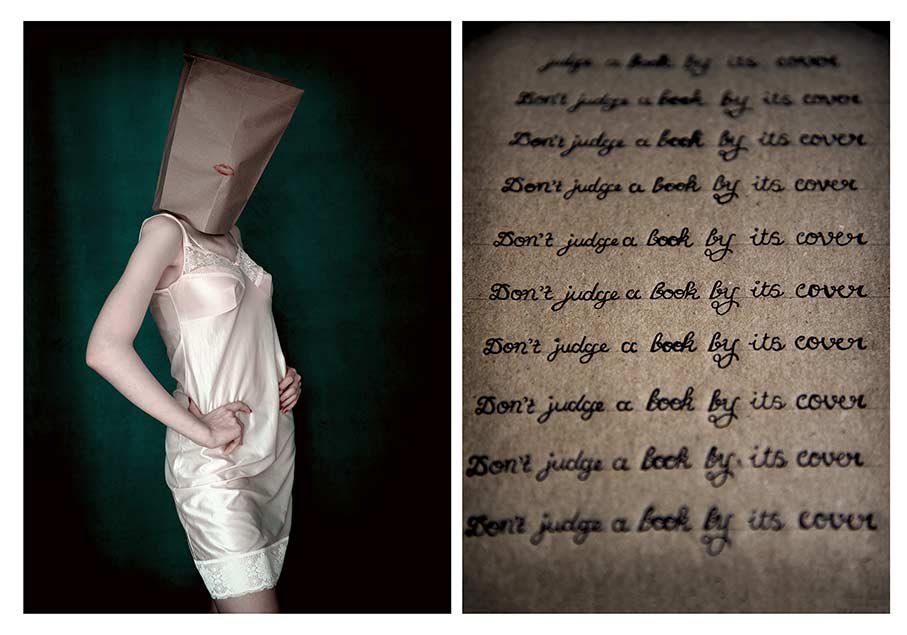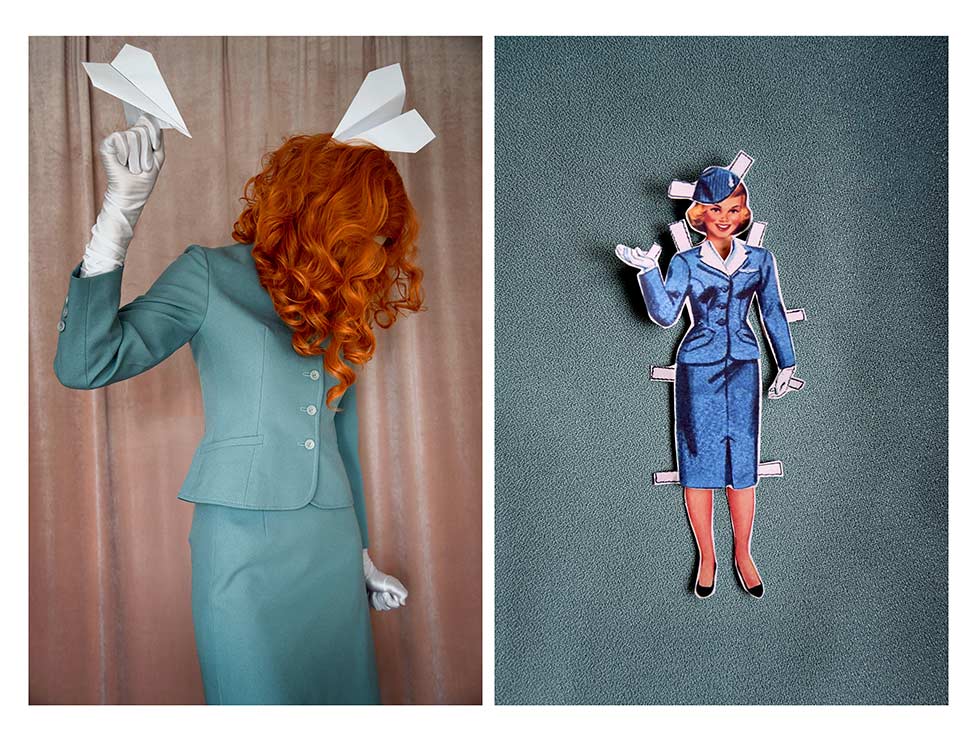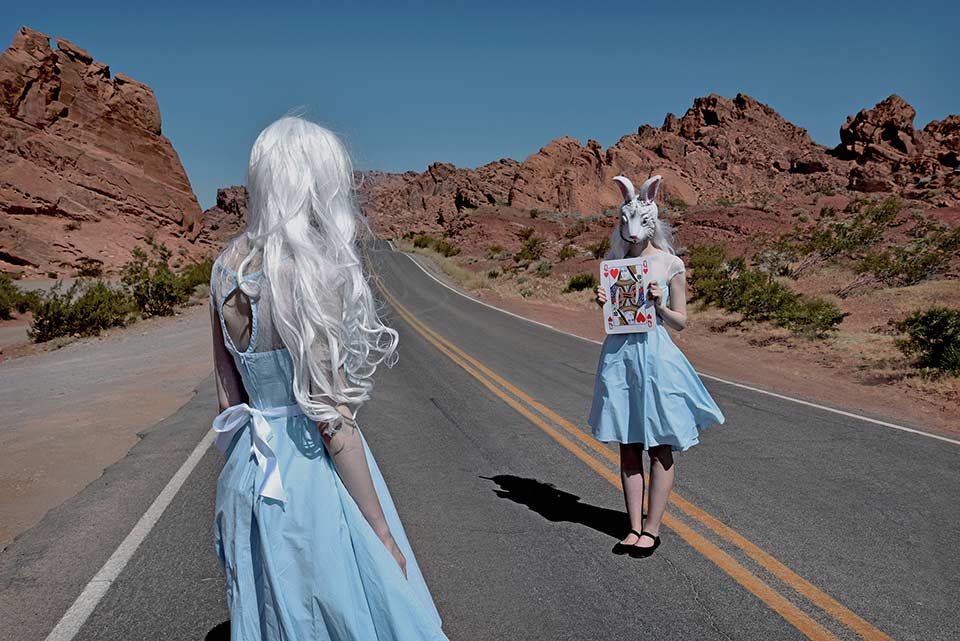
VICKY MARTIN | Exploring Femininity Through Fantasy
Throughout Vicky’s photography, we are witnessing the exploration and her fascination with identity and the emotions evoked by scenarios based on both fantasy and reality.
Martin finds inspiration in strong female characters from literature, film, or everyday life.
She intertwines her created characters with staged realities, which seek to convey the tension and conflicts found within the self. Throughout her work, she likes to express recurring themes that she is drawn to, which include: conformity to the stereotypical, individual, and societal expectations of femininity, vulnerability, and self-doubt. While all her works contribute to the narrative framework developed across her shooting projects, they also each depict an element of ambiguity that the viewer is invited to interpret in relation to themselves and their unique perception of the world.
Series: Selfhood
The series Selfhood is inspired by the proverb “the eyes are the window to the soul” and a desire to challenge the need to see the eyes (and therefore the “soul”) within a portrait photograph. Each image disguises the eyes of the subject so the viewer finds a connection with the character and narrative without the visual stimulation of the eyes.
The female characters in this series searched for an independent identity crafted through outward appearance and signaled through dress and posture, challenging the traditional assessment of character made via eye contact. Each image contains its own distinctive narrative, separate from the other photographs in the series, connected only through the motif of disguised eyes. Such various stories and characters convey the many varied and nuanced facets of femininity that exist in reality. Indeed, Selfhood, although grounded in the reality of the female experience, also uses fantastical creative elements to allow viewers to draw on their preconceptions evoked by the traditional fairy tales or childhood figures referenced in the images. Therefore, each portrait in the series can take on several different identities and interpretations based on the viewer’s personal connections, from memory or culture to the established fantasy narratives signaled in the photographs.
Throughout Selfhood, I have been inspired by strong female characters, particularly those from childhood fairy tales, such as Snow White, Sleeping Beauty, Alice, and Little Red Riding Hood, as well as those from a more modern (and thereby possibly more sinister) origin, like Offred. However, despite the strength inherent in these tenacious and independent women, there lies a vulnerability and a need to hide behind the traditional tropes of femininity, which I sought to convey in this series via the concealment of the eyes. The partially obscured female figure depicts the conflict I wanted to create between a female’s own sense of identity and femininity and society’s preconceived expectations for the female. The concealed eyes symbolize both the female’s desire to hide the “soul” and identity of oneself from the world and instead create it through a less vulnerable armor of dress and appearance and society’s desire to not look into a woman’s eyes to see the reality of individuality in each female and expose the fantasy of an unnuanced singular female experience.
About Vicky Martin
Vicky Martin is an award-winning British photographer with a background in art and design. She is best known for her conceptual portraits depicting the conflict between themes of fantasy and reality and strength and vulnerability, especially concerning the female experience. Vicky intertwines her created characters with staged realities, which seek to convey the tension and conflicts found within the self.
Throughout her work, she likes to explore, through strong female characters, recurring themes that she is drawn to, which include: conformity to the stereotypical, individual, and societal expectations of femininity, vulnerability, and self-doubt. While all her works contribute to the narrative framework developed across her series’, they also each depict an element of ambiguity that the viewer is invited to interpret in relation to themselves and their unique perception of the world.
Her work has been widely published and exhibited nationally and internationally in solo and group shows from Europe to the USA.
Her work continues to garner many awards and nominations, which in the past years included the Portrait Photographer of The Year 2020 at the Minimalist Photography Awards, Finalist at the Lensculture Art Photography Awards 2019, Winner of the Professional Beauty and Fashion Category at the Chromatic Awards 2018, Winner of the All About Photo Magazine Colors issue 2018, Winner of the Single Image in the Professional Fine Art Category at the 12th Julia Margaret Cameron Awards 2018 and Winner of the Professional Fine Art Series at 2016 Fine Art Photography Awards.
Fine Art Photography. 2018
Vicky Martin © All rights reserved.
Series: (great) Expectations
(great) Expectations is a series of portrait and still-life photographs that explore ideas of conformity to the stereotypical, individual, and societal expectations of femininity and the portrayal of roles typically perceived as female. Each portrait is succeeded by correlating still life photographs to further symbolize the themes within the portraits.
The female protagonist in this series searches for a sense of self and belonging through the pursuit of traditional ideals of beauty but, in doing so, reveals contradictions between her own and society’s expectations of perfection.
The still-life photographs compound the expectations conveyed in the portraits: the narratives explore the relationship with and attitude towards the idea of beauty. Some convey the need to transcend these expectations of femininity, while others explore how such stereotypes enter into conflict with the sense of self and what it means to be female.
In this series, I was inspired by the 1950s ideal of femininity and female identity, an era in which women were shaped into becoming a saccharine image of the perfect woman, perfect wife, and perfect mother.
I wanted to create narratives that combine this era of superficial perfection with the claustrophobic sense of conformity that my protagonist continues to experience even in today’s society.
The pursuit of this unattainable ideal of the female identity during the 1950s, often in reality, led to women experiencing intense feelings of loneliness and isolation.
I aim to convey these emotions and combine them with conflicting feelings of ambivalence and defiance as my character is overwhelmed with the social pressure to conform to the female ideal.
Getting to know: Vicky Martin
Lens Magazine: Please share the background of your photography journey. Did you grow up in a creative environment? What led you to the fine art photography field?
Vicky Martin: Growing up, I was a creative child, always drawing, painting, or making something with my hands, which is why I enjoy creating my own props and costumes now for my work.
My first introduction to photography was while studying art and design at college in the 90s, it was part of the curriculum, and I fell completely in love; it seemed such a natural fit for me creatively. I then went on to study photography solely;
I realized that this was what I wanted to do with my life.
For many years I worked with manual cameras and 35mm film, processing my own B&W prints and using local printers for color, before I decided to change to digital around 2008 after finding it extremely difficult to continue on with the processing side. It is such a different world for me, but I enjoy the flexibility digital offers, mainly using Photoshop.
I am self-taught in all aspects of digital, including Photoshop, which has taken some years to adapt to, but I am always learning.
Lens Magazine: Where your inspiration comes from? Is your artistic style influenced by other photographers or a specific art field?
Vicky Martin: Strong females have always inspired me, especially in literature and film. My previous series have been drawn from references to Alice from Alice’s Adventures in Wonderland and Dorothy from The Wizard of Oz, as well as the Hollywood blonde epitomized by Marilyn Monroe, Lana Turner, and Betty Grable. I enjoy depicting the tensions between strength and vulnerability, confidence and isolation, and appearance and reality.
I would therefore say that my artistic style is not influenced by any specific artists or photographers but rather by what I read, watch, and experience, spanning both generations and genres.
Lens Magazine: Tell us about the workflow process from the step of the idea until the final outcome. Which software do you use for editing? Do you see post-processing as the primary time investment in your work?
Vicky Martin: I am always excited to get inspiration for an idea for a possible series; I find it extremely energizing. After I have the initial idea for a series, it can take months or even years to reach the point where I start to take the photographs. Once I have outlined the series’ main theme or narrative, I work on the color palette I want to use before sourcing and creating the props and costumes. I am constantly thinking through how to piece the series together, whether I am physically working on it in my studio or if I am doing the laundry or dishes – it can be all-consuming!
I often work on two projects at once, both at different stages. I am always nervous and excited when I get to the photographing stage as although I know how I want it to look, it can be challenging to translate this into reality. Even when I know I have a shot, I won’t wrap the shoot until I have tried several different ideas. Post-processing is a tough stage as I am very exacting and must be fully happy with the image before moving on to the next.
Lens Magazine: From your personal journey in the fine art photography field, what will be your advice to the young photographer looking for a way of development?
Vicky Martin: If anything, my own personal journey has taught me the value of patience and perseverance. You must believe in yourself, your ability, and, most importantly, your ideas.
Lens Magazine: What’s the future hold? Any special exhibitions in the upcoming months?
Vicky Martin: I am photographing a new series Telling Tales, with another series currently in the planning stage. I will be exhibiting with Fotonostrum at Photo Basel in Switzerland in the upcoming months. This upcoming October, my work will be featured at the XIV Florence Biennale as the finalist of the international competition through this wonderful collaboration of Lens Magazine, Art Market Magazine, and Florence Biennale.
Series: Curiouser & Curiouser
Curiouser and Curiouser is a conceptual series of photographs influenced by the story Alice’s Adventures in Wonderland. I was inspired to create this series by personally identifying with the theme of not belonging that features prominently in Alice’s narrative.
Immersed in a world of make-believe, Alice shows her courage and strength by being able to successfully navigate through a fantasy land, appearing more at home in this wonderland than that in Victorian society. In my series, the modern-day Wonderland of Las Vegas provides the backdrop for the protagonist to discover, struggle with, and eventually come to terms with her own feelings of not fitting in.
Within the series, the protagonist, Alice, is accompanied by another figure, the White Rabbit. The character of the White Rabbit in my series is inspired by the following passage from Lewis Carroll’s Alice’s Adventures in Wonderland, where Alice has just fallen down the rabbit hole and is contemplating the subsequent bewildering situation she finds herself in: the narrator describes how ‘this curious child was very fond of pretending to be two people. “But it’s no use now,” thought poor Alice, “to pretend to be two people! Why, there’s hardly enough of me left to make one respectable person!” (Carroll, 1865). The idea here of Alice projecting some of her own thoughts and feelings into another person was the inspiration for the relationship I created between my own Alice and White Rabbit. The figure of the White Rabbit is a manifestation of the grown-up thoughts and attitude that my protagonist is struggling to adapt and claim as her own.
The White Rabbit encourages Alice to accept herself for who she is and to adapt to the daunting transition from child to adult: the calming influence on Alice’s angst and anxiety, the friend who dissipates her sense of loneliness, and the ‘one respectable person’ that Alice finds the courage to become at the end of the series.
Throughout all of my work, I am inspired by strong female characters, and Alice is no exception. However, behind her strength, there lies doubts and insecurities about who she is and who other people think she is, which is what I sought to convey in this series.
“The childhood character placed into an adult world depicts the tension I wanted to create around the idea of growing up and becoming an adult: the push-pull relationship symbolized by Alice and the White Rabbit mirrors the conflict an individual feels when leaving behind the safety and comfort of childhood for the pressure and anxiety of being an adult.”

